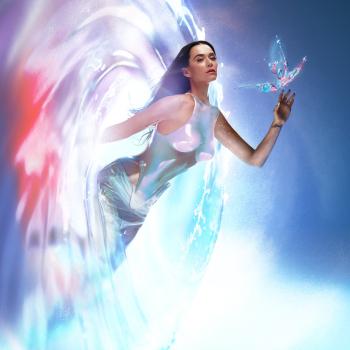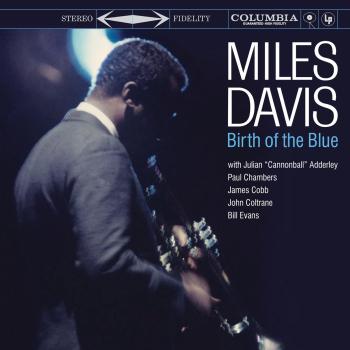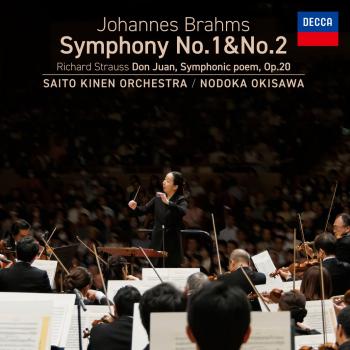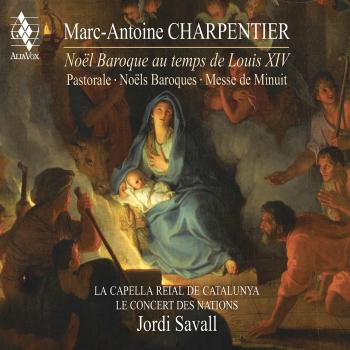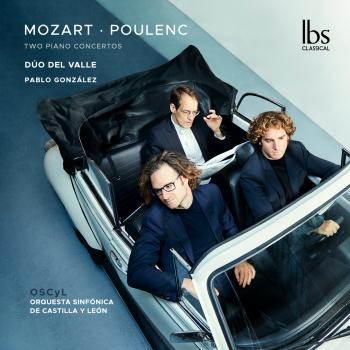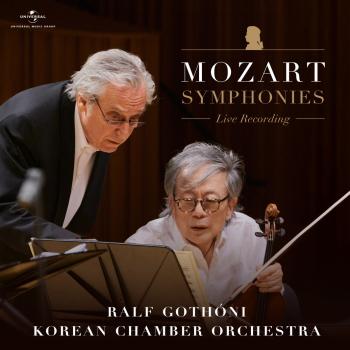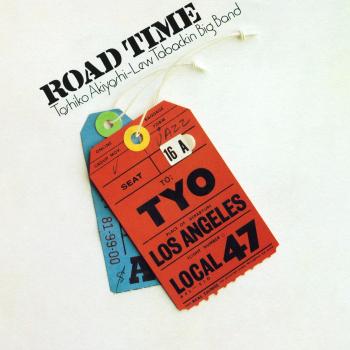
Officium Novum Jan Garbarek & The Hilliard Ensemble
Album info
Album-Release:
2010
HRA-Release:
19.11.2013
Album including Album cover Booklet (PDF)
I`m sorry!
Dear HIGHRESAUDIO Visitor,
due to territorial constraints and also different releases dates in each country you currently can`t purchase this album. We are updating our release dates twice a week. So, please feel free to check from time-to-time, if the album is available for your country.
We suggest, that you bookmark the album and use our Short List function.
Thank you for your understanding and patience.
Yours sincerely, HIGHRESAUDIO
- 1 Ov zarmanali 04:11
- 2 Svjete tihij 04:15
- 3 Allting finns 04:19
- 4 Litany - Otche nash - Dostoino est 13:07
- 5 Surb surb 06:40
- 6 Most Holy Mother of God 04:34
- 7 Tres morillas m’enamoran 03:32
- 8 Sirt im sasani 04:06
- 9 Hays hark nviranats ukhti 06:26
- 10 Alleluia. Nativitas 05:19
- 11 We Are the Stars 04:19
- 12 Nur ein Weniges noch 00:19
Info for Officium Novum
It was in 1993 when Norwegian saxophonist Jan Garbarek and the Hilliard Ensemble, a vocal quartet from Britain focused on music of the Renaissance, have first recorded together. Their outstanding piece “Officium”, with Garbarek as an additional free-ranging ‘voice’, has resulted in consistently inventive music making since then and sold more than one million copies. The follower “Mnemosyne” (1998) took the story further, expanding the repertoire beyond ‘early music’ to embrace works both ancient and modern.
Now, after another decade of shared experiences, Garbarek and the Hilliards found together once again in the St. Gerold´s monastery and recorded their third album “Officium Novum”.
Its central focus lies, besides music from Russia, France, Spain and the Estonian Arvo Pärt, on the music of Armenia based on the adaptations of Komitas Vardapet, pieces which draw upon both medieval sacred music and the bardic tradition of the Caucasus. Therefore the musicians have traveled to the countries, studied the music and present it with a passion which shows another unexpected advancement.
The inspired bringing together of Jan Garbarek and the Hilliard Ensemble has resulted in consistently inventive music making since 1993. It was the groundbreaking “Officium” album, with Garbarek’s saxophone as a free-ranging ‘fifth voice’ with the Ensemble, which gave the first indications of the musical scope and emotional power of this combination. “Mnemosyne”, 1998’s double album, took the story further, expanding the repertoire beyond ‘early music’ to embrace works both ancient and modern.
Now, after another decade of shared experiences, comes a third album from Garbarek/Hilliard, recorded, like its distinguished predecessors, in the Austrian monastery of St Gerold, with Manfred Eicher producing. Aptly titled, there is continuity in the music of “Officium Novum” and also some new departures. In ‘Occident/Orient’ spirit the album looks eastward, with Armenia as its vantage point and with the compositions and adaptations of Komitas as a central focus. The Hilliards have studied Komitas’s pieces, which draw upon both medieval sacred music and the bardic tradition of the Caucasus in the course of their visits to Armenia, and the modes of the music encourage some of Garbarek’s most impassioned playing. Works from many sources are drawn together as the musicians embark on their travels through time and over many lands. “Officium Novum” journeys from Yerevan to Byzantium, to Russia, France and Spain: all voyages embraced by the album’s dramaturgical flow, as the individual works are situated in a larger ‘compositional’ frame.
'Hays hark nviranats ukhti' and 'Surb, surb' are part of the Divine Liturgy of the Holy Mass which Komitas Vardapet (1869-1935) arranged on different occasions and for different formations. The versions here derive from those made for male voices in Constantinople in 1914/1915. 'Hays hark nviranats ukhti' is a hymn traditionally sung at the beginning of the mass while the priest spreads incense. 'Surb, surb' (Holy, holy) corresponds to 'Sanctus' in the Latin Mass.
'Ov zarmanali' is a hymn of the Baptism of Christ (Sunday after Epiphany), sung during the ceremony of blessing the water, and 'Sirt im sasani' a hymn of 'Votnlva' (the bathing-of-the-feet ceremony celebrated on Maundy Thursday).These Komitas pieces are from the period 1910 to 1915, but their roots reach back to antiquity. Ethnomusicologist as well as forward-looking composer-philosopher, Komitas not only showed how Armenian sacred music had developed from folk music, but used folk styles expressively, to make new art music for his era.
Other music in the “Officium Novum” programme also spans the centuries, medieval music and contemporary music unified in the concentrated approach of Garbarek/Hilliard, now definable as a specific group sound. Jan Garbarek contributes two compositions. For “Allting finns” the saxophonist sets “Den Döde” (“The dead one”), a poem by Sweden’s Pär Lagerkvist (1891-1974). “We are the stars”, meanwhile, last heard on the saxophonist’s “Rites” album, is based on a Native American poem of the Pasamaquoddy people.
Longest piece on the album is the thirteen-minute “Litany” imaginatively bringing together works of spiritual and musical affinity: “Otche Nash” from the Lipovan Old Believers tradition is preceded by a fragment of the “Litany” of Nikolai N. Kedrov. Kedrov (1871-1940) was a student of Rimsky Korsakov, a founder of the Kedrov Quartet, a vocal group that toured under Diaghilev’s direction, and writer of many compositions and chant arrangements which have since found their way into the repertoire of Orthodox choirs.
Arvo Pärt’s “Most Holy Mother of God”, a piece written for the Hilliard Ensemble in 2003, is heard in a pristine a capella reading. If the Hilliards have proselytized persuasively for Pärt’s music they have surely also been affected by the austerity of his writing.
The Byzantine “Svete tihij” (Gladsome Light), composed in the third century, is one of the oldest Christian hymns, and once accompanied the entrance of the clergy into the church and the lighting of the evening lamp at sunset. The Spanish “Tres morillas” from the 16th century “Cancionero de Palacio” radiates a different kind of light, as its dancing rhythm underpins a tale of lost love.
Perotin’s “Alleluia. Nativitas” is a new account of a piece which the musicians had previously recorded on “Mnemosyne”: the freedom of interpretation is testimony to the way the project as a whole has grown since its introduction on ECM New Series.
As for the saxophone, from an improvisational perspective this remains an exceptionally pure context in which to experience Jan Garbarek’s creativity. Garbarek is still approaching this music freely, improvising with the soloists, creating roving counterpoint, weaving in and of the web of vocal texture, and helping to shape what England’s Evening Standard called “some of the most beautiful acoustic music ever made”.
The album concludes with actor Bruno Ganz reading Giorgos Seferis’s “Nur ein Weniges noch”, from the Greek poet’s 1935 “Mythistorema” cycle, a poem previously embraced in ECM’s album devoted to T.S. Eliot and Seferis, “Wenn Wasser wäre”.
„Garbarek also improvises melodic lines that swoop out of the ensemble, creating an exhilarating feeling of lightness and freedom.“ (John Eyles, BBC Online)
„Neither classical nor jazz, neither new nor old, this music simply exists, for everyone’s wonder and nourishment.“ (Geoff Brown, The Times)
Jan Garbarek, soprano and tenor saxophones
The Hilliard Ensemble:
David James, countertenor
Rogers Covey-Crump, tenor
Steven Harrold, tenor
Gordon Jones, baritone
The inspired bringing together of Jan Garbarek and the Hilliard Ensemble has resulted in consistently inventive music making since 1993. It was the groundbreaking “Officium” album, with Garbarek’s saxophone as a free-ranging ‘fifth voice’ with the Ensemble, which gave the first indications of the musical scope and emotional power of this combination. “Mnemosyne”, 1998’s double album, took the story further, expanding the repertoire beyond ‘early music’ to embrace works both ancient and modern.
The Norwegian saxophon player, Jan Garbarek had an early breakthrough into the elite of modern jazz in the 60's, due to his extensive cooperation with Keith Jarrett. His name is listed next to the big names from the U.S. and is associated with the birth of an original european sound in jazz.
His tone is clear, indipendent, ascetic and pure. 'The north and nature, song and mystery' are what Garbarek calls his origins and these are his unrefutable heritage. If it wasn't for his strong inner connection with Norwegian folklore, he wouldn't be able to integrate Brasilian and Asiatic influences as convincingly as he does. That the origin of all music lies in song, is to be felt in many of his compositions, and his greatest attention lies on melody and on the clear articulation of melodious-lines, that he plays with unmistakable impressive urgency. 'In my best moments I hope to give meaning to every note'.
Suddenly, out of an oscillating melody, Garbarek's horn emerges, keeping its sovereignty into the highest pitches, and without giving way to uncontrollable recklessness. His unisono playing with Eberhard Weber's singing bass gives his songs a hymnal luster. The breadth of peacefulness and maturity in his music eliminates all question of stylish fashionability.
Jan Garbarek's Chambermusic-Jazz might well be the most beautiful sound next to silence, and he, as sculptor of these sounds, is intrinsingly connected with the illustrative and folkloristic qualities and influences. He is an original stylist always searching for new realms for his intense and extremely visual music.
Unrivalled for its formidable reputation in the fields of both early and new music, The Hilliard Ensemble is one of the world's finest vocal chamber groups. Its distinctive style and highly developed musicianship engage the listener as much in medieval and renaissance repertoire as in works specially written by living composers.
The group's standing as an early music ensemble dates from the 1980s with its series of successful recordings for EMI (many of which have now been re-released on Virgin) and its own mail-order record label hilliard LIVE, now available on the Coro label; but from the start it has paid equal attention to new music. The 1988 recording of Arvo Pärt's Passio began a fruitful relationship with both Pärt and the Munich-based record company ECM, and was followed by their recording of Pärt's Litany . The group has recently commissioned other composers from the Baltic States , including Veljo Tormis and Erkki-Sven Tüür, adding to a rich repertoire of new music from Gavin Bryars, Heinz Holliger, John Casken, James MacMillan, Elena Firsova and many others.
In addition to many a cappella discs, collaborations for ECM include most notably Officium and Mnemosyne with the Norwegian saxophonist Jan Garbarek, a partnership which continues to develop and renew itself, and Morimur with the German Baroque violinist Christoph Poppen and soprano Monika Mauch. Based on the research of Prof. Helga Thoene, this is a unique interweaving of Bach's Partita in D minor for solo violin with a selection of Chorale verses crowned by the epic Ciaconna , in which instrumentalist and vocalists are united.
The group continues in its quest to forge relationships with living composers, often in an orchestral context. In 1999, they premiered Miroirs des Temps by Unsuk Chin with the London Philharmonic Orchestra and Kent Nagano. In the same year, James MacMillan's Quickening, commissioned jointly by the BBC and the Philadelphia Orchestra, was premiered at the BBC Proms. With Lorin Maazel and the New York Philharmonic, they performed the world premiere of Stephen Hartke's 3 rd Symphony and they recently collaborated with the Munich Chamber Orchestra with a new work by Erkki-Sven T üü r. In 2007 they joined forces with the Dresden Philharmonic Orchestra to premiere Nunc Dimittis by the Russian composer Alexander Raskatov, also recording this for ECM.
Booklet for Officium Novum

